If you want to ensure the brightest, most true-to-life sublimation transfers, your sublimation paper matters! We put three brands of paper to the test, plus tried using regular copy paper and cardstock in this sublimation paper comparison. We figured out which sublimation paper is best…and which you should avoid!
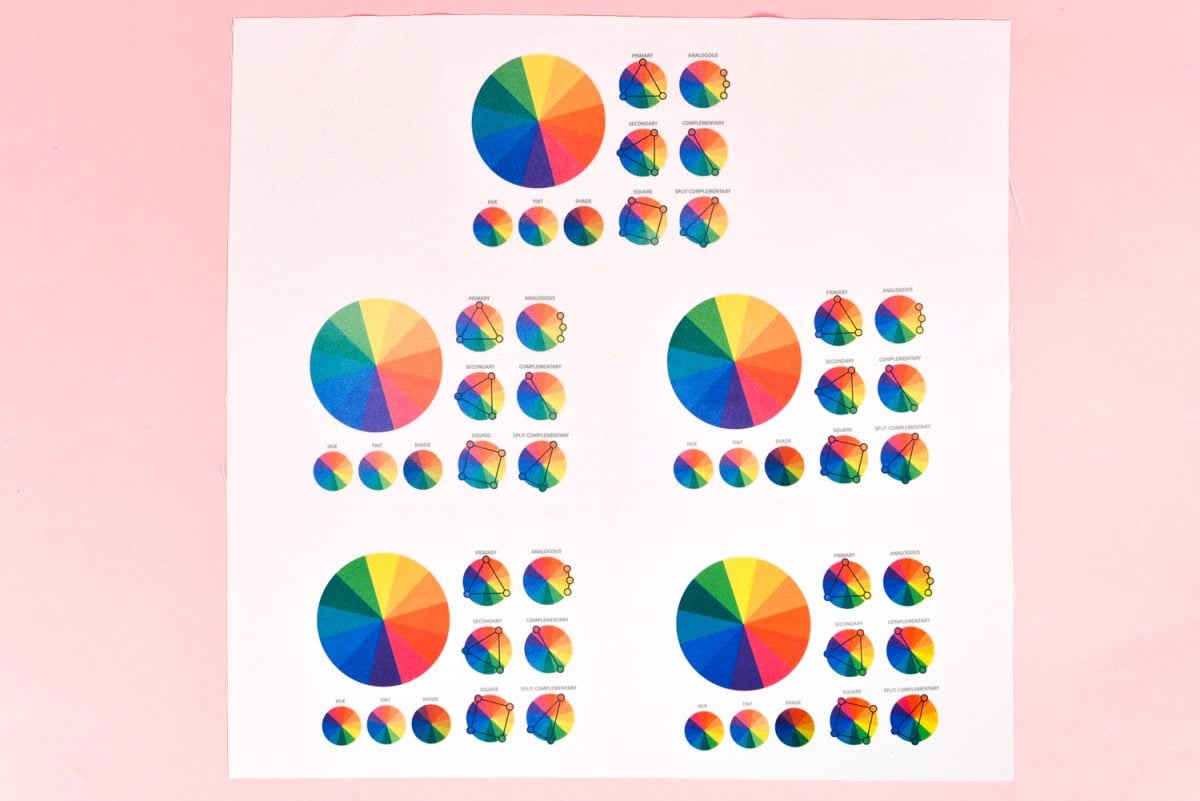
Today I wanted to do a quick test of several different brands of sublimation paper. This is a part of my newest series on sublimation printing. You can check out all of the posts in the series here:
- The Ultimate Guide to Sublimation Printing & Crafting
- What’s the Difference Between Sublimation, Cricut Infusible Ink, and HTV?
- How to Convert a Printer for Sublimation
- ICC Profiles & Color Management for Beginners
- Sublimation Software: What’s Best for Your Needs?
- The Best Sublimation Blanks and Substrates for Crafters
- Must-Have Sublimation Supplies and Tools
- Sublimation Paper Comparison
- Heat Press Machine Comparison for Sublimation Crafters
- Using Sublimation Prints with the Cricut Mug Press
- The Beginner’s Guide to Sublimation on Ceramic
- Troubleshooting Sublimation Printing
- Sublimation Cheat Sheets for Time, Temperature, Pressure & More!
So, let’s answer the question, “what is the best sublimation paper?” I ordered three packs of sublimation paper. All three were a medium weight and work with all sublimation printers:
- A-Sub Sublimation Transfer Paper
- Hiipoo Sublimation Heat Transfer Paper
- TexPrint R Sublimation Transfer Paper
I also had a request to test plain copy paper, so I added that in, along with a smooth white cardstock, because why not?
I tested all five on a piece of polyester fabric (do not use cotton). Remember that sublimation requires polyester or a poly-coating for the sublimation process to work. You’ll also need a light-colored material because sublimation ink is transparent.
I’ve found having a few yards of polyester fabric is SO helpful when doing sublimation crafting, since what you print is not what you transfer. This gives me the ability to do a test transfer on the fabric before using my more expensive blank/substrate. Highly recommend getting a few yards and using it for practice!
A caveat: I only tested this single color wheel image on a single substrate (polyester fabric) printed with my converted Epson printer. You may have different results with a different image, a different substrate (soft substrates like t-shirts and socks vs. hard substrates like tumblers and phone cases), or different sublimation printer (I just got a Sawgrass printer so I’m interested in seeing if there’s a difference!).
Sublimation printing is one of those crafts that can really change depending on these three factors. I suggest you run this same test yourself if you want to figure out which is the best for your particular set-up.
Join our Sublimation Made Simple Facebook group for tips, tricks, support, and resources!
Sublimation Paper Comparison Set Up
I printed the same exact color wheel image on all five types of paper. I printed them all at the same time. All five were fast-drying and I didn’t have to wait long to press.
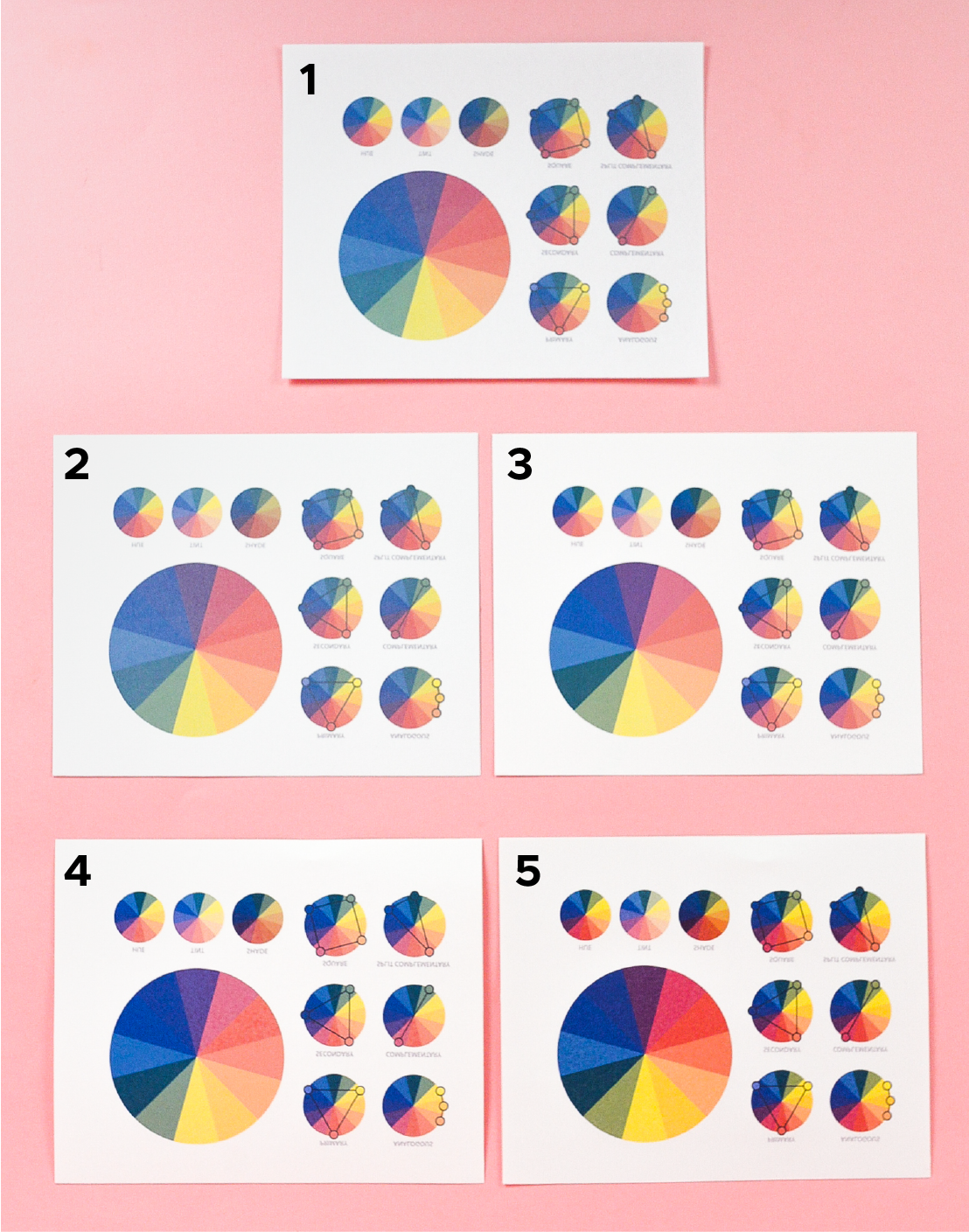
- Copy paper
- Smooth cardstock
- A-Sub sublimation paper
- Hiipoo sublimation paper
- TexPrint sublimation paper
Right away, you can see right away that there’s a big variance between the printing on these five images. The smooth cardstock fared the worst—it’s lightest and the most mottled. The copy paper isn’t far behind, though I was kind of surprised it printed a bit better than the cardstock. I think the difference in paper weight between the two might matter here.
Then there are the three high-quality sub papers. I was actually really surprised at the difference between these three. I was honestly expecting them to be the same. But you can definitely see the difference—the TexPrint is much more bright and vivid than the other two. You can really see it when you compare the individual colors, particularly in the reds.
The next brightest is the Hiipoo, and then A-Sub was well behind that. I’ve had the A-Sub recommended to more than any other paper, so I thought that was a bit interesting. I was definitely interested in seeing how they transferred to the scrap of polyester fabric I had.
Sublimation Paper Comparison Results
Not surprisingly, the transfer of each image mirrored the printed images:
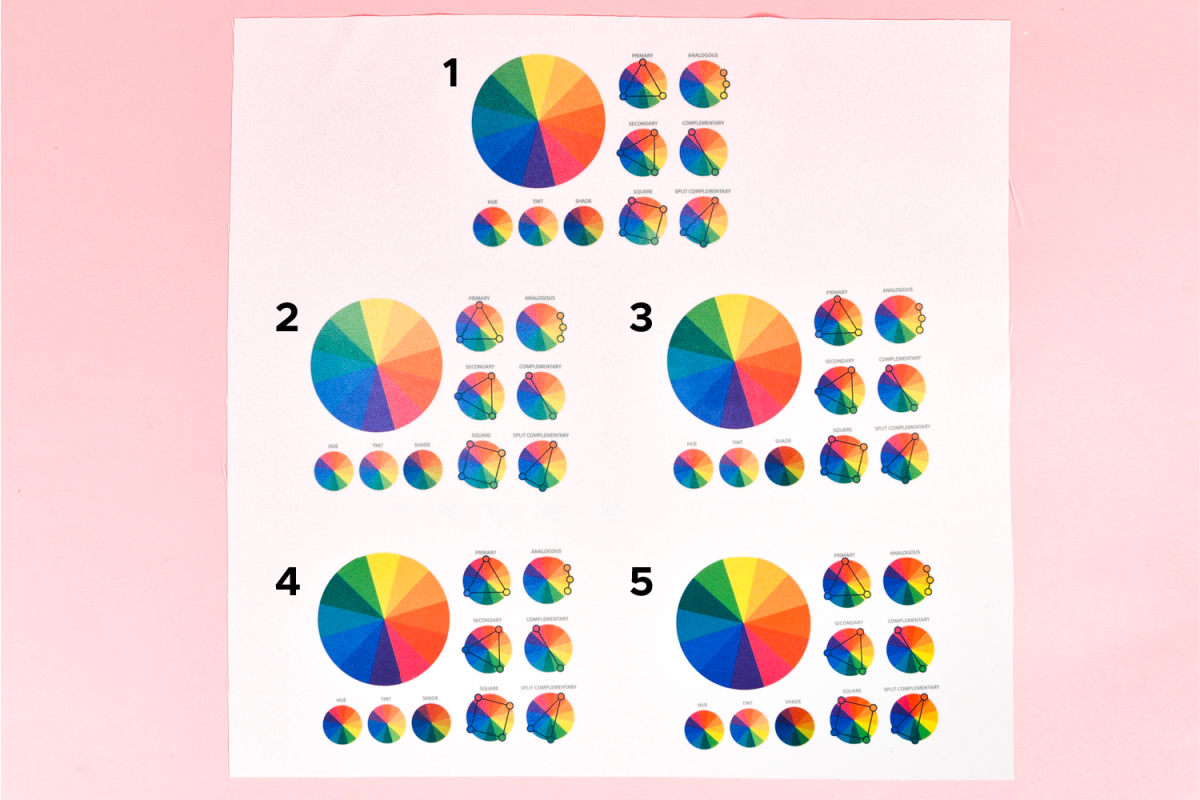
- Copy paper
- Smooth cardstock
- A-Sub sublimation paper
- Hiipoo sublimation paper
- TexPrint sublimation paper
You can see here that the TextPrint, followed by the Hiipoo, were significantly better than the A-Sub and then the non-sublimation papers.
Here are detailed shots of each, from my favorite to least favorite.
The first is the TexPrint paper. It’s nice and even and the tiny writing is the most clear of all of the versions. The color is the brightest and the most vivid, with almost no mottling. Going forward, this will be my go-to sublimation paper:
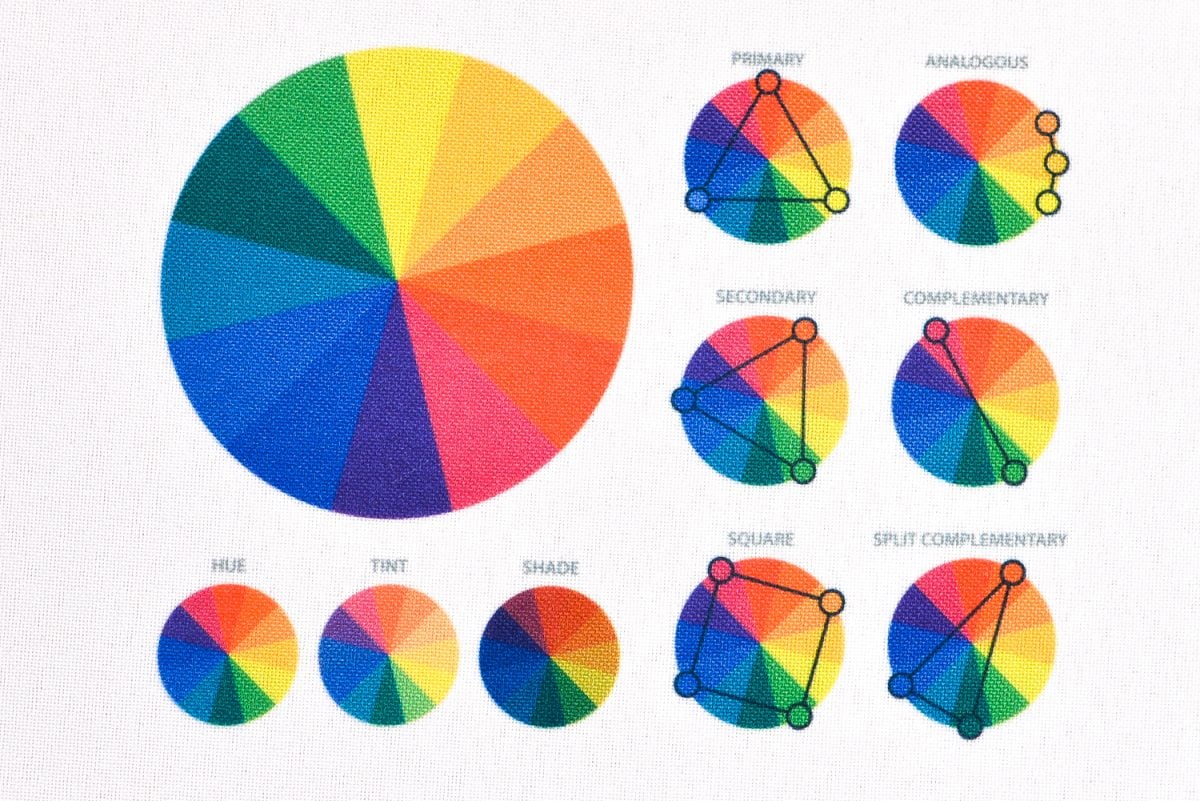
Next is the Hiipoo sublimation paper. It’s bright and even and vivid like the TexPrint, but not quite as saturated in some of the colors. The text is just ever so slightly less easy to read (compare the words “ANALOGOUS” on both). This is definitely a solid option.
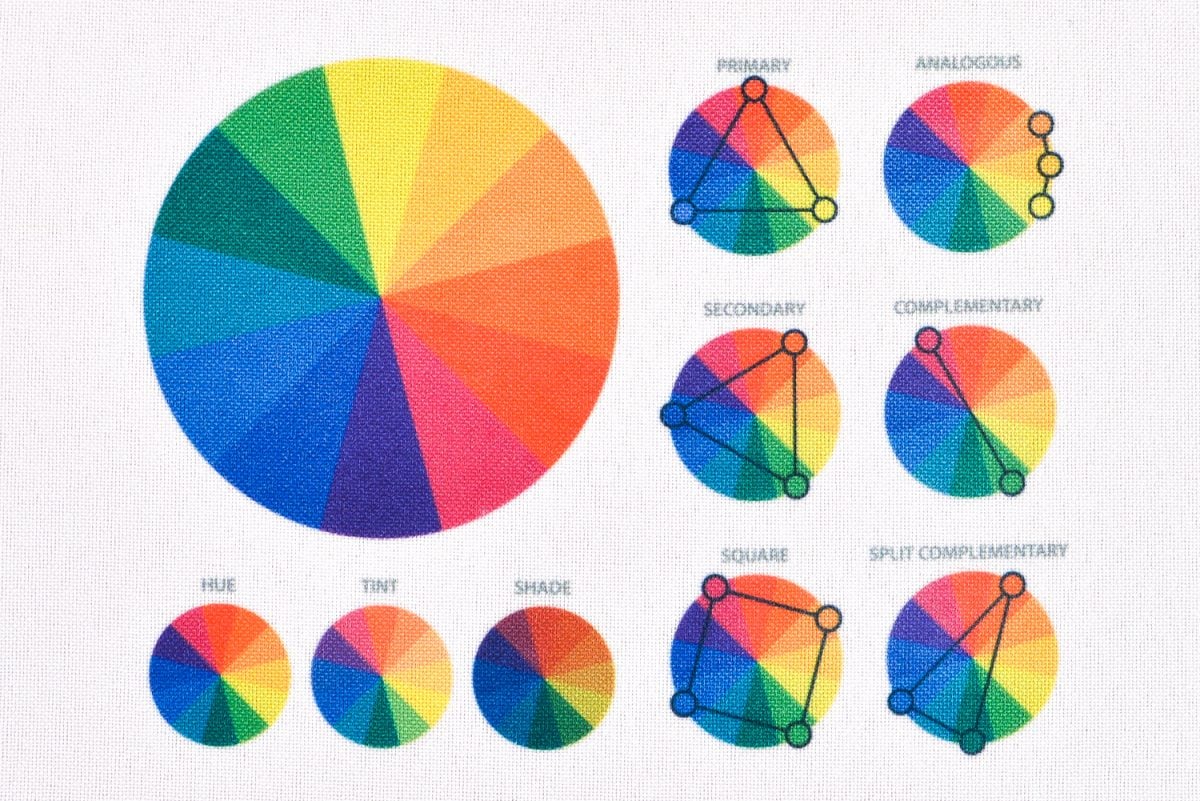
Next is the A-Sub. I expected this one to be as good (or better, since it’s the one that’s often recommended) so I was a little disappointed to see that it didn’t turn out nearly as vivid as the other two sublimation papers. The color is more mottled and uneven.
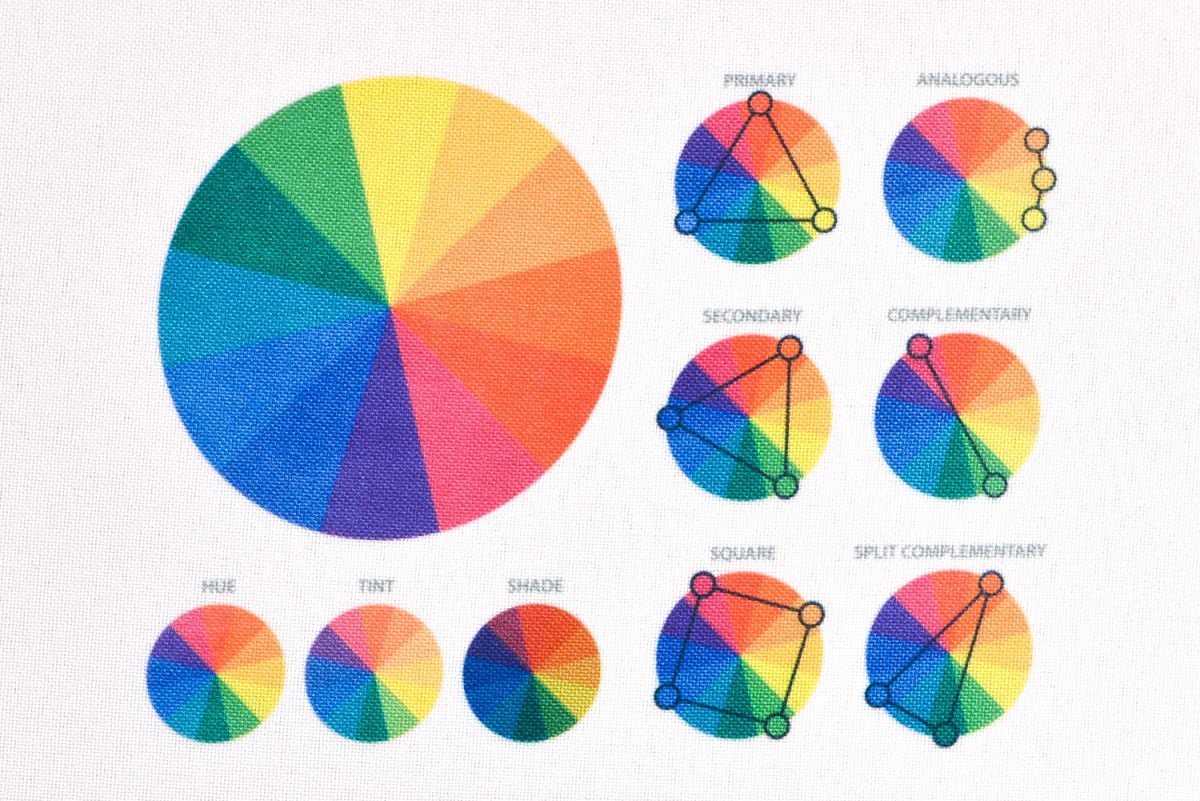
Then there’s the copy paper. I was a little surprised that this wasn’t more terrible. I mean, compared to the others, it’s not great, but it’s also not as bad as I expected. There’s definitely less saturation and less definition between colors. Some of the colors (like in the bottom right) are lighter. Because the paper is thinner, I think it soaked up the sublimation ink a little more so the definition was lost.
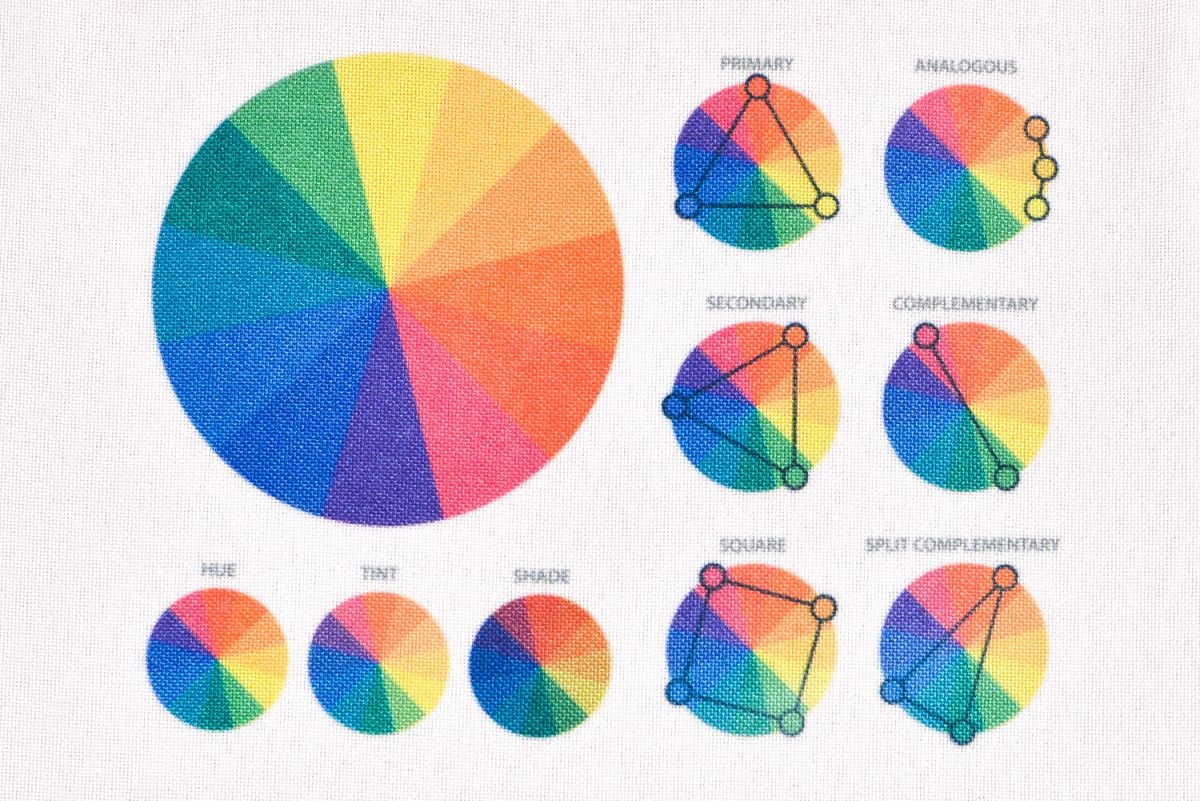
You also need to be aware that because copy paper is so thin, it really bled onto the butcher paper I was using to protect my press. On the left is the paper I used for all four of the other transfers, and on the right is the copy paper transfer. This is something to definitely be aware of—you don’t want that ink getting on your press platen!
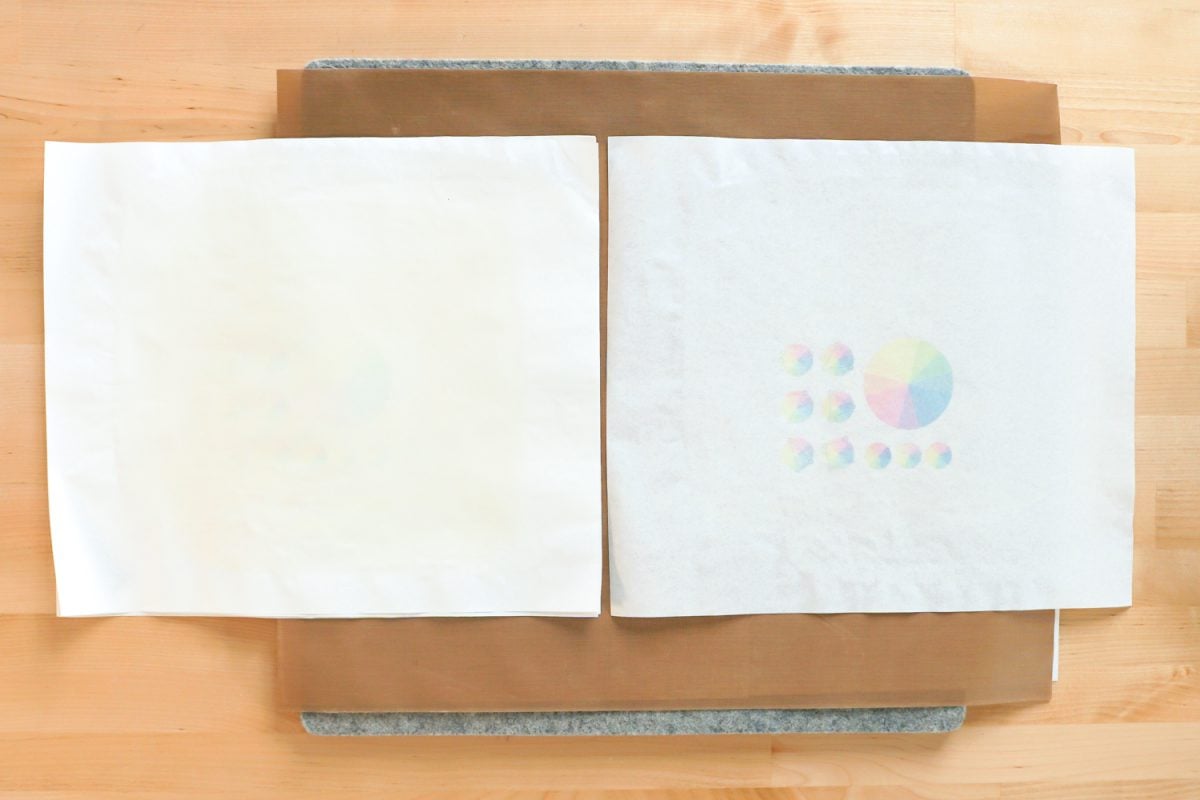
And finally is the smooth cardstock. This one was not worth it at all—the colors are the most faded and mottled and the text is the hardest to read. There is not a lot of color definition and overall you’re not going to be happy with your transfer.
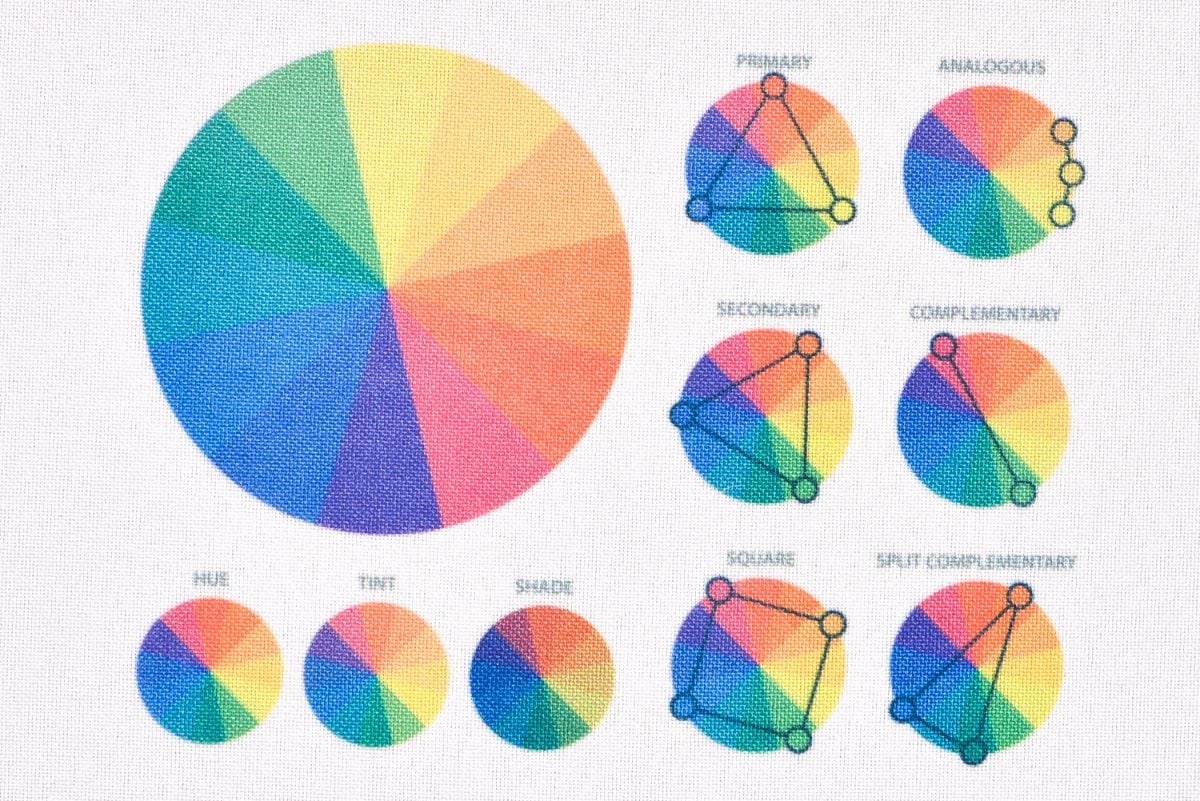
Finally, I washed my piece of fabric with all five transfers just to see if there would be any difference. I didn’t think there would be and I was right. The washed transfers were pretty much identical to the pre-washed transfers.
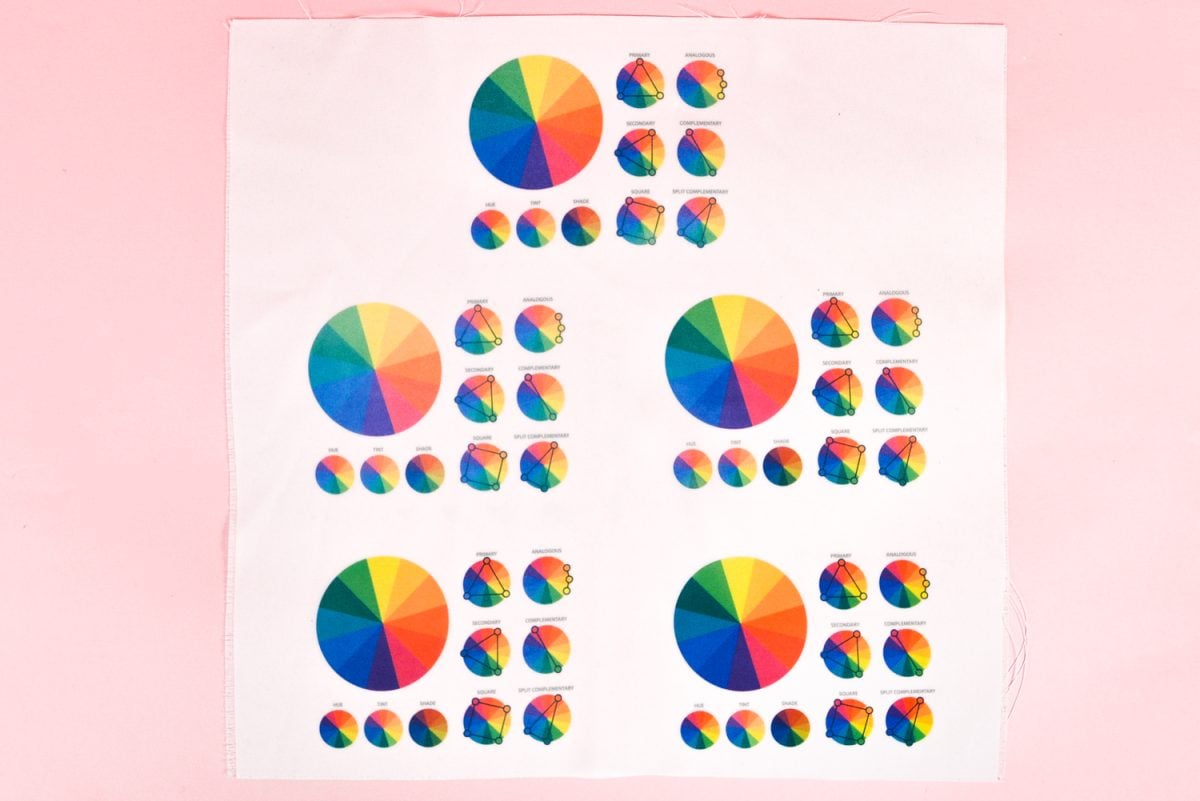
So for me and my set up, I thought the best paper was the TexPrint dye-sublimation paper. I’ve been using it on many of my projects and it always produces beautiful, vivid results!
Since I originally wrote this post, I have tried two other types of sublimation paper: The Sawgrass TruePix and the PYD Life paper. Both of them did great—I will continue to use both of those as well. There are also other brands like Koala sublimation paper and Printers Jack sublimation paper which I haven’t tested. I’d love to know if you’ve used these and what you think!
Still looking for a printer? Check out my Best Sublimation Printers Comparison!
I hope you found this sublimation paper comparison helpful—let me know if you have any questions in the comments!
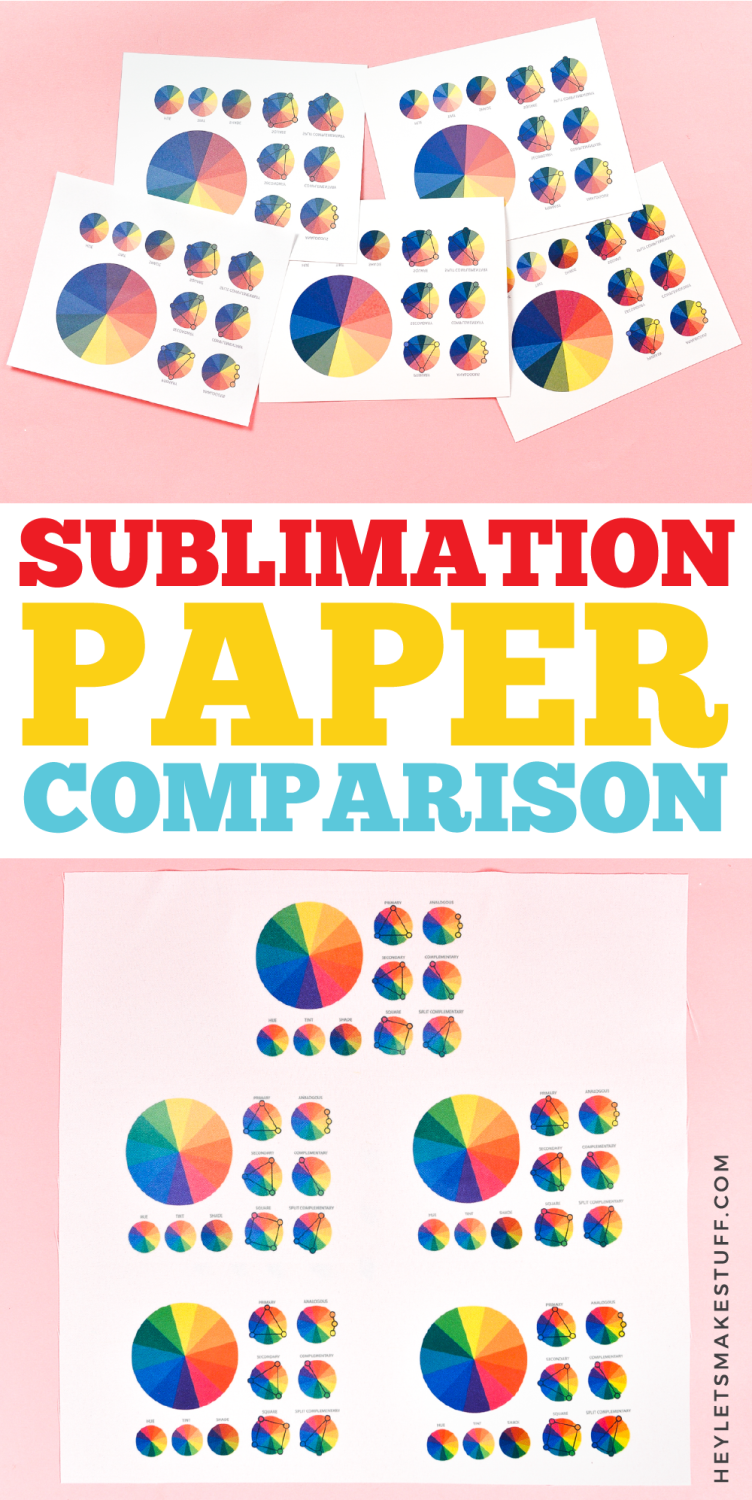
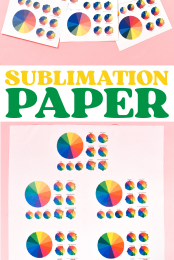
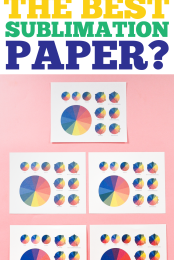
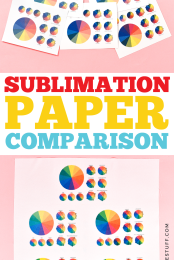


Comments & Reviews
Angelica Ferrer says
Hello!
This was really insightful and detailed.
Thank you for taking the time in doing these tests!
I have a question though, I’m having trouble with the colors not coming out as vivid as what I see online, and wanted to know if I’m doing something wrong?
When I print out the image (I’m using A-Sub paper), it looks good when printing out, but it’s REALLY light or faded when putting it on anything else (I’m mainly using white vinyl).
Please help!
Michelle says
Very informative thanks so much
Susan Gilbert says
You are so welcome!
Nikki Mello says
Great article! I have used A Sub because that’s what everyone raves about. Quick question- Did you use the TexPrint High Release paper or their regular substrate paper?